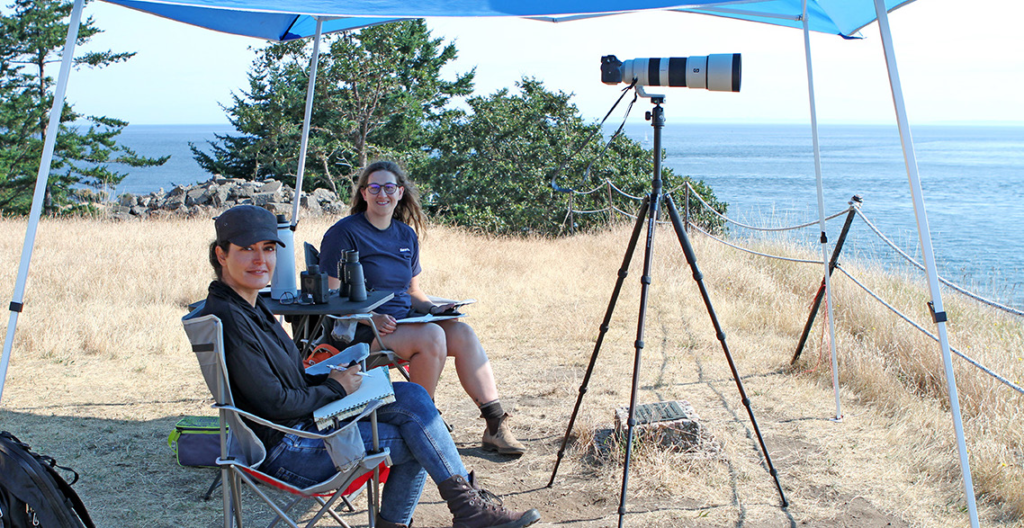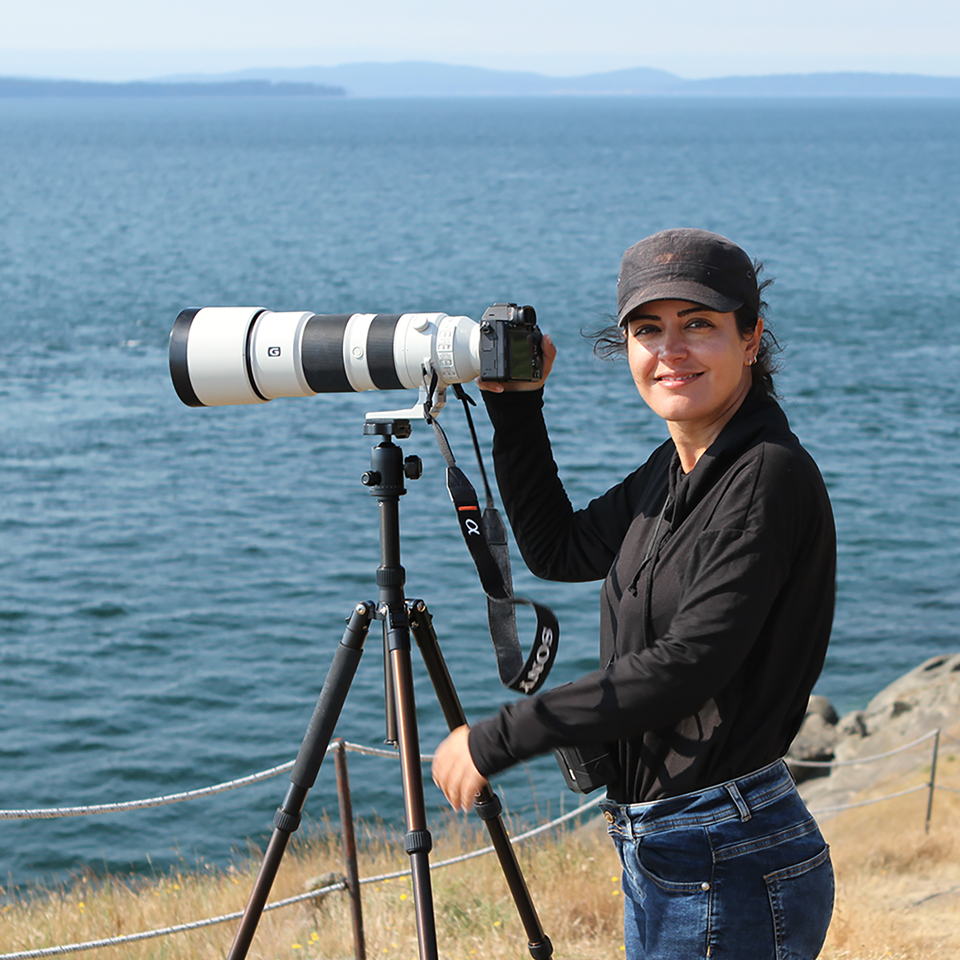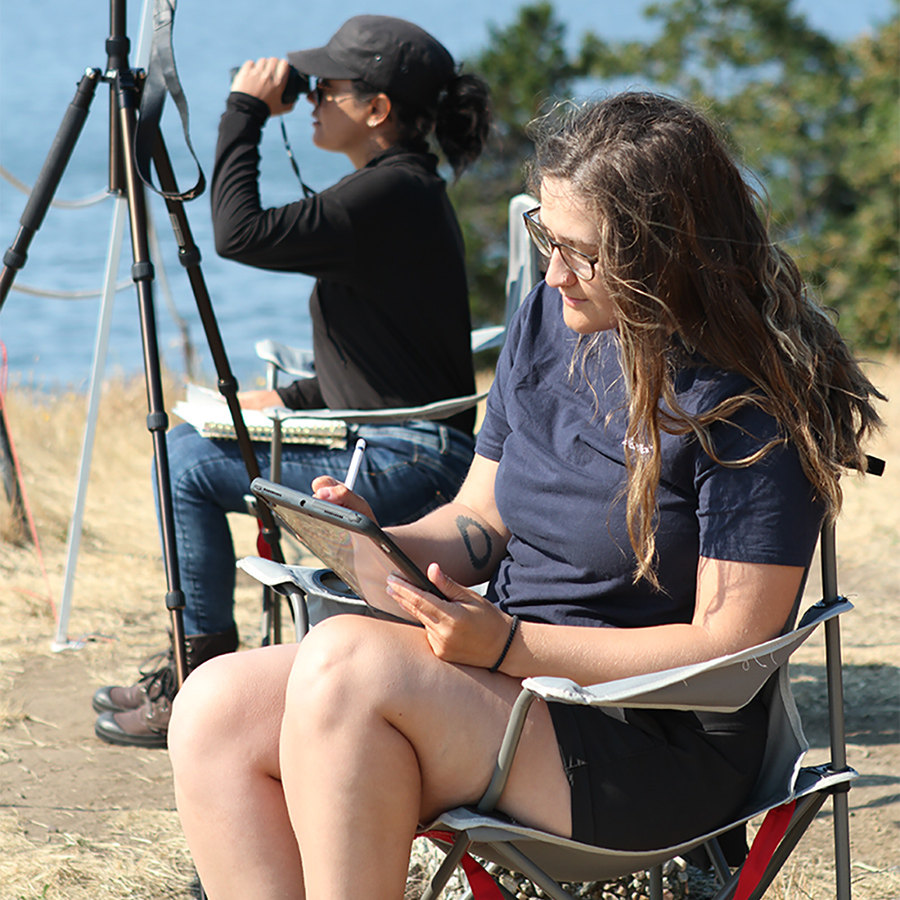by Brian Lewis
Since time immemorial, the raised, rugged sandstone rocks of East Point on Saturna Island have served as an ideal lookout for observing the passing parade of orcas, humpbacks, seals and other marine life forms as they move through Boundary Pass and nearby Georgia Strait. It was at this precise spot, in fact, where in 1964 the legendary Moby Doll’s capture took place which led to the beginning of science’s long learning journey into the wondrous complexities, intelligence and culture of these magnificent orcas, a.k.a. killer whales.
Fast forward to today and in addition to camera-toting tourists and Saturna residents who still rush to East Point when word spreads that the “whales are coming,” you’ll also find two young graduate student scientists from Simon Fraser University — Kaitlin Baril and Azadeh (Azi) Gheibi — utilizing East Point in much the same way as previous generations have done for many decades.
But Kaitlin and Azi’s mission has a far more serious side than simply taking memorable snapshots of orcas. Their full-time daily work, throughout this summer at East Point and back at SFU’s Burnaby Mountain campus until next spring, is completely focused on ensuring that the endangered Southern Resident Killer Whales survive for the long-term.
While the research gives Kaitlin and Azi an opportunity to complete their Masters degrees in Ecological Restoration with SFU’s Faculty of Environment, it also serves the greater public good in gathering data to test the effectiveness of a relatively new federal government program that has established seasonal Interim Sanctuary Zones (ISZs) around parts of the east side of both Saturna and Pender Islands.

Azadeh (Azi) Gheibi and Kaitlin Baril, SFU graduate researchers, at East Point


Subscribe our Newsletter
Subscribe our Newsletter